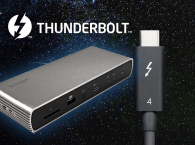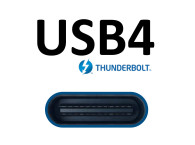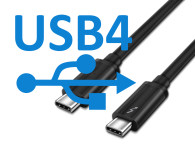The audio industry is a small circle, that depends upon a small group of organizations to keep moving, even if at its own, slow moving pace. Unfortunately, as I wrote many times before, the audio industry increasingly depends upon technologies that it doesn't control.
The last few months of confinement because of the global pandemic, as I forecasted, generated extra time for research and development efforts. And research institutes, industry consortiums, technology alliances, and many important standard-promoting organizations have remained active while remotely connected, with internal work continuing and sometimes even intensifying. Unintended consequences are the lack of international cooperation due to restrictions in traveling.
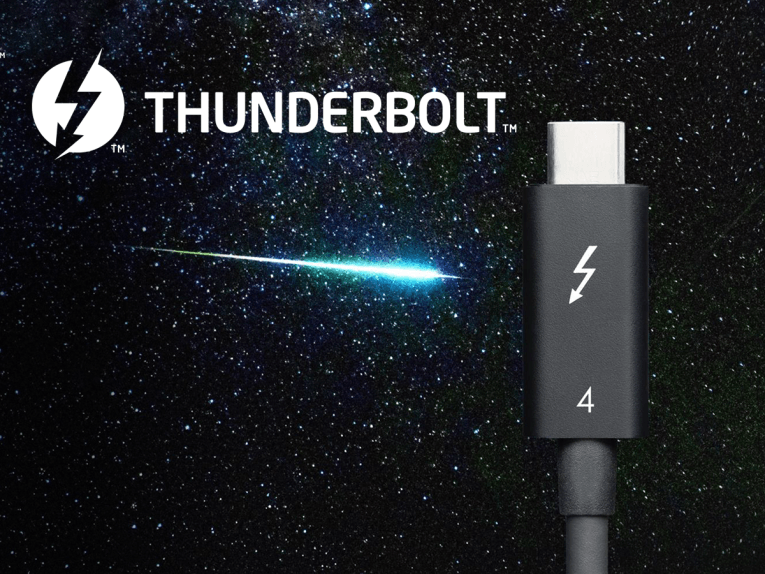
Computers and mobile devices - with all the associated technologies and standards, from physical interfaces such as USB and Ethernet to wireless protocols such as Bluetooth, Wi-Fi - and the many emerging technologies for the connected home and all the connected "things" are among the areas that are accelerating the pace of change, not necessarily in a coordinated way.
In September 2019, the USB Implementers Forum (USB-IF), the support organization for the advancement and the adoption of USB technology, published the USB4 specification, which had been promised in April that year. That specification intends to end a lot of the uncertainty surrounding the evolution of the Universal Serial Bus technology, which is one of the most important interfaces for the audio industry in the digital and networked age. I discussed the audio industry's perspective about it in an article following my meeting with the USB-IF at CES2020 - available here.
The ways things stand, we're going to need at least another year for products based on the USB4 specification to become available. The USB-IF Board of Directors and working committees - supported directly by Apple, HP, Intel, Microsoft, Renesas, STMicroelectronics, and Texas Instruments - did all agree on radical changes for USB4. The most interesting one being the integration and convergence with Thunderbolt, the technology created by Intel and adopted and promoted by Apple.
As I detailed in my overview, in March 2019, Intel decided to make all the innovation delivered with Thunderbolt 3 available to everyone. And the company announced that it contributed the Intel Thunderbolt protocol specification to the USB Promoter Group, enabling other chip makers to build Thunderbolt compatible silicon, royalty-free. As a direct consequence of that decision, the USB Promoter Group announced the release of the USB4 specification, based on the Thunderbolt protocol. The premise being that convergence of the underlying Thunderbolt and USB protocols would increase compatibility among USB Type-C connector-based products, simplifying the technology for consumers and putting an end to the existing complexity.
It was always clear that in professional applications, particularly for media creation, Thunderbolt (3) would remain a viable solution on its own, supported and certified by Intel, and available in systems available from Apple, and gradually expanding to Microsoft and the PC/Windows ecosystem (Lenovo being the main company that comes to mind). But for the massive consumer space and the mobile industry, USB4 would become the Thunderbolt-compatible standard.
Meanwhile, as mentioned, much of the dialog that is typical in technology forums and international standardization efforts was delayed due to the global pandemic, while on the other hand, internal R&D efforts inside companies big and small have continued or accelerated. Like with R&D, companies confirmed key strategic commercial decisions, many of which are not in line with what was formerly forecasted in those standardization efforts. Some of those can be explained for the changes in the market caused by the COVID-19 outbreak and predicted medium-term economic downturn.

The Apple Silicon
During its first all-online Worldwide Developers Conference (WWDC20) event in Cupertino, CA, Apple confirmed important updates across all its platforms and operating systems, confirming a new radical transition for the Mac, paving the way for the company's transition from Intel-based Mac computers to Apple's own silicon chips. Apple Silicon is the name that Apple uses for its own system-on-chip (SoC) and system-in-package (SiP) processors designed using ARM architecture. This was long predicted and was the direct result of a long process of grievances originated by Intel's own inability to keep up its x86 processor roadmap on schedule, and at the pace required by Apple. This was also part of a process that started with Apple's entry to the mobile industry with the iPhone, the iPad, expanding its own chipsets, and the need to keep a significant lead over everyone else's efforts, including Samsung and Qualcomm.
Apple Silicon directly integrates the GPU and every other solution required in today's devices, from security and biometrics, to powering advanced artificial intelligence engines. And this is something that even Intel recognizes makes sense, since the company is moving (slowly) in that same direction. The difference is Microsoft will be its last remaining large client in the foreseeable future.
In part, all that explains the fact that Intel has now decided to renew its own efforts with Thunderbolt and announce a new Thunderbolt 4 specification. This means that even though USB4 remains the good-enough universal solution for all consumer devices, Intel intends to ensure Thunderbolt will remain on its own path to offer the most powerful and reliable alternative for power users - professional users, corporate and media applications. And that enables Intel to sell hardware, while keeping control of at least the certification processes.
This is also the first time Intel has announced an update to Thunderbolt technology, directly supported with the simultaneous announcement of the release of its own hardware - the new Intel Thunderbolt 4 controller 8000 series, which includes JHL8540 and JHL8340 host controllers for computer makers and a JHL8440 device controller for accessory makers. All complemented with readily available Thunderbolt 4 developer kits and certification testing.
Intel even confirmed that these solutions will become available directly in laptops to be launched later in 2020, using Intel's upcoming mobile PC processors, code-named "Tiger Lake," which will be the first to integrate Thunderbolt 4.

Thunderbolt Rules
And what is included in the new Thunderbolt 4 specification? Not much actually compared to Thunderbolt 3, but enough to make it clear that Intel is intent on following a different path. It reinforces the 40 Gbps capabilities by doubling the minimum video and data requirements of Thunderbolt 3, in video it supports two 4K displays or one 8K display, and in data it supports PCIe at 32 Gbps for storage speeds up to 3,000 MBps. More importantly, it adds support for dock solutions with up to four Thunderbolt 4 ports, with PC charging on at least one computer port (for laptops that consume 100 W or less). There's also the ability to wake a computer from sleep by touching the keyboard or mouse when connected to a Thunderbolt dock.
These updates are something that will be appreciated in all applications segments, since it enables Thunderbolt networking simply by connecting multiples devices to the dock. In existing Thunderbolt 3 and in future USB4 devices, there is the possibility to daisy-chain but not switch data bidirectionally between multiple ports (networking).
To reinforce the use of Thunderbolt 4 and create a differentiator from USB4 in professional/corporate applications, Intel added required direct memory access (DMA) protection (such as Intel VT-d and others) to help prevent physical DMA attacks. Certified Thunderbolt cables (both passive and active) will be available in longer lengths than possible until now - up to 2 meters in length for now, and 5 meters or more very soon. Certification is mandatory for all computers, accessories, and cables.
Thunderbolt 4's stricter testing and compatibility requirements will ensure the same set of functionalities will be supported, while in USB4 systems, a lot of things will be optional and depend upon the manufacturers' choices - and that will not always be obvious to the consumer. As Intel explains, "Thunderbolt 4 and USB4 products will use the same underlying protocol specification to improve compatibility for USB-C based products. Thunderbolt 4 will offer the most complete version of USB-C with a required superset of capabilities not required by USB4."
While the USB retro-compatibility requirements will dictate the need to accommodate a lot of technology compromises and the need for a large industry consensus to ensure flexibility, reliability, and security in USB4 solutions, Thunderbolt was created on a solid foundation from where it can freely evolve in multiple directions if Intel wishes. And this announcement shows that Intel seems determined to do it now.
For the audio and media industries in general, Thunderbolt certainly offers a much more reliable fully working solution today, which is not dependent on the USB inconsistencies. A recording studio today is perfectly comfortable with Thunderbolt-based solutions, which offers total compatibility with USB devices and accessories, offering the best of both worlds. With Thunderbolt 4, studio and audio operations gain even more flexibility in the way devices are integrated - including with Ethernet - without any drawbacks.

The Way Apple Likes
When implementing Thunderbolt 3, Apple established a benchmark for the way it ensures that all its systems work in the same way. With Thunderbolt 4, Intel is doing the same for any design that embraces the technology.
The obvious goal is to become a de-facto industry standard, leveraging the fact that USB4 will be much slower to supersede the technology's inherent limitations and mold consumer's perception. The challenge for this Intel strategy will always be how much support it will receive from the powerful mobile industry, which will naturally support USB4 with all its weight.
Future Apple devices that currently use USB-C, like the iPad Pro, will soon support USB4. And likely that will signal the transition from Lightning to USB-C on the iPhones, which is frequently the topic of uninformed debate. Previously, Apple didn't have any reasons to move away from Lightning, an optimized interface that it developed for its needs, and which was in fact the foundation - contributed by Apple - toward the existing USB Type-C connector (without Apple Lightning the industry would still be debating how to evolve the Mini/Micro-USB connectors).
With USB4, Apple will have a compelling reason to finally leave Lightning behind, knowing there would be no penalty (Lightning is compatible with current USB and future USB4 devices). But unlike many other companies in the mobile space that will consider USB4 as the "good-enough" approach and will prioritize lower cost, Apple could decide to push forward and go straight to Thunderbolt 4, if it sees a benefit in the convergence within its own Apple Silicon and OS's ecosystem. There would be no penalty for doing so. Apple's volumes could bring Thunderbolt 4 higher costs to the current Lightning accessories level, plus all the benefits of its superior features.
And even though Apple's upcoming transition to its own silicon in two years would seem to point to a divergence from Intel, the reality is the strategy is much more concerted than anyone could imagine. Just a few hours after Intel released the Thunderbolt 4 announcement, Apple clarified that Macs - powered by its own chips - will support the full Thunderbolt 4 specifications.
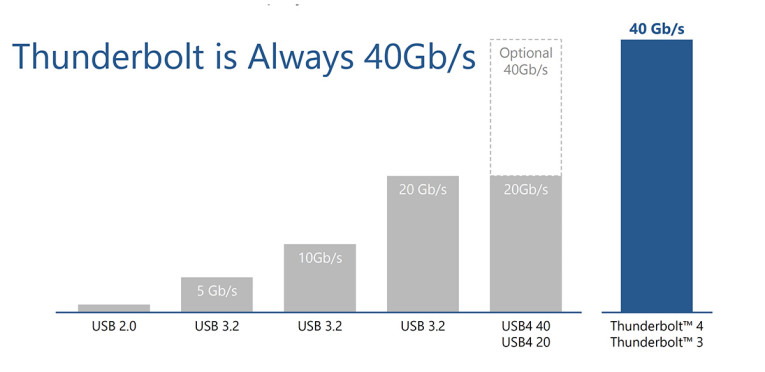
Those companies that fear change and try to downplay evolution, justifying their decision by claiming they are against obsolescence, ironically don't realize they are the main source of obsolete products, even before they are sold. aX
More about Thunderbolt 4
This article was originally published in The Audio Voice newsletter, July 16 2020 (#286). Click here to register to The Audio Voice




